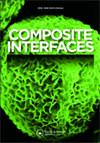Integrating machine learning and response surface methodology for analyzing anisotropic mechanical properties of biocomposites
IF 2.4
4区 材料科学
Q3 MATERIALS SCIENCE, COMPOSITES
引用次数: 1
Abstract
ABSTRACTThis study enhances the anisotropic mechanical properties of banana fiber-epoxy composites by optimizing fiber loading, orientation, and treatment using Response Surface Methodology (RSM) and Artificial Neural Network (ANN). RSM suggests optimal values: fiber loading at 33 wt%, NaOH treatment at 6.8 wt%, and fiber orientation at 15 degrees. This material has exceptional mechanical characteristics, including a maximum tensile strength (TLS) of 31.72 MPa, a maximum flexural strength (FLS) of 42.86 MPa, and a maximum impact strength (IPS) of 38.56 kJm-2. ANN effectively predicts strengths with high R2 scores of 0.969, 0.984, and 0.954 for tensile, flexural, and impact strengths. Incorporating batch normalization and dropout layers enhances robustness. The study concludes that NaOH treatment and fiber orientation significantly impact the composite’s anisotropy.KEYWORDS: ANNbiocompositesfiber orientationalkali treatmentanisotropic behaviormechanical propertiesresponse surface methodology (RSM) AcknowledgementsThe authors would like to acknowledge the scheme of Innovation, Technology Development, and Deployment (1819) of the Department of Science and Technology (DST) - Delhi.Disclosure statementNo potential conflict of interest was reported by the author(s).Author contributionAuthor 1: Corresponding AuthorAuthor 2: Research GuideAuthor 3: Machine Learning Prediction model developed.结合机器学习和响应面方法分析生物复合材料的各向异性力学性能
摘要本研究利用响应面法(RSM)和人工神经网络(ANN)对香蕉纤维-环氧树脂复合材料的加载、取向和处理进行优化,以提高其各向异性力学性能。RSM建议的最佳值为:纤维负荷为33 wt%, NaOH处理为6.8 wt%,纤维取向为15度。该材料具有优异的机械性能,包括最大拉伸强度(TLS)为31.72 MPa,最大弯曲强度(FLS)为42.86 MPa,最大冲击强度(IPS)为38.56 kkm -2。ANN对拉伸、弯曲和冲击强度的预测R2分别为0.969、0.984和0.954。合并批归一化和退出层增强了鲁棒性。研究表明,NaOH处理和纤维取向对复合材料的各向异性有显著影响。关键词:annbio复合材料;纤维取向碱处理;各向异性行为;力学性能;响应面法(RSM)致谢作者感谢德里科技部(DST)的创新、技术发展和部署计划(1819)。披露声明作者未报告潜在的利益冲突。作者贡献作者1:通讯作者作者2:研究指导作者3:机器学习预测模型开发
本文章由计算机程序翻译,如有差异,请以英文原文为准。
求助全文
约1分钟内获得全文
求助全文
来源期刊

Composite Interfaces
工程技术-材料科学:复合
CiteScore
5.00
自引率
3.80%
发文量
58
审稿时长
3 months
期刊介绍:
Composite Interfaces publishes interdisciplinary scientific and engineering research articles on composite interfaces/interphases and their related phenomena. Presenting new concepts for the fundamental understanding of composite interface study, the journal balances interest in chemistry, physical properties, mechanical properties, molecular structures, characterization techniques and theories.
Composite Interfaces covers a wide range of topics including - but not restricted to:
-surface treatment of reinforcing fibers and fillers-
effect of interface structure on mechanical properties, physical properties, curing and rheology-
coupling agents-
synthesis of matrices designed to promote adhesion-
molecular and atomic characterization of interfaces-
interfacial morphology-
dynamic mechanical study of interphases-
interfacial compatibilization-
adsorption-
tribology-
composites with organic, inorganic and metallic materials-
composites applied to aerospace, automotive, appliances, electronics, construction, marine, optical and biomedical fields
 求助内容:
求助内容: 应助结果提醒方式:
应助结果提醒方式:


